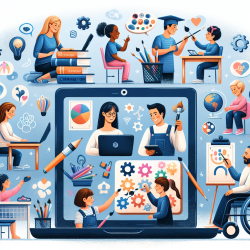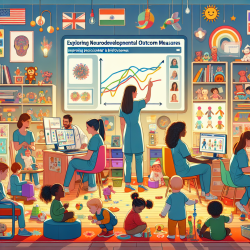Introduction
In the realm of speech language pathology, particularly within school settings, the Individualized Education Program (IEP) serves as a cornerstone for student success. At TinyEYE, we believe that effective IEP planning and meetings are paramount to creating positive outcomes for children. By leveraging data-driven decisions, speech language pathologists can craft more tailored and impactful plans that cater to the unique needs of each child.
The Importance of Data in IEP Planning
Data is a powerful tool that can transform how we approach IEP planning. By analyzing comprehensive data, speech language pathologists can gain insights into a child's progress, strengths, and areas needing improvement. This allows for the creation of targeted goals that are both achievable and measurable.
Data-driven IEPs ensure that each decision is backed by evidence, increasing the likelihood of successful outcomes. This approach not only supports the child's growth but also provides a clear framework for parents and educators to understand and contribute to the child's educational journey.
Steps to Implementing Data-Driven IEPs
- Gather Comprehensive Data: Utilize assessment tools and gather data from various sources, including classroom observations, parent feedback, and previous IEP reports.
- Analyze the Data: Look for patterns and trends that can inform goal setting. This analysis should consider both qualitative and quantitative data.
- Set Measurable Goals: Develop specific, measurable, achievable, relevant, and time-bound (SMART) goals based on the data analysis.
- Collaborate with Stakeholders: Engage with teachers, parents, and other professionals to ensure a holistic approach to the child's development.
- Monitor and Adjust: Continuously track the child's progress and adjust the IEP as needed to reflect any changes in the child's needs or circumstances.
Online Therapy: A Catalyst for Data-Driven Success
Online therapy platforms, such as those provided by TinyEYE, offer unique advantages in data collection and analysis. These platforms can seamlessly integrate with existing school systems, providing real-time data and analytics that are crucial for informed decision-making.
Moreover, online therapy facilitates consistent communication between all parties involved in the IEP process. This ensures that everyone is aligned and informed, fostering a collaborative environment that is essential for the child's success.
Conclusion
In conclusion, embracing a data-driven approach to IEP planning can significantly enhance the effectiveness of speech language pathology services in schools. By utilizing comprehensive data and leveraging online therapy tools, speech language pathologists can create more personalized and impactful IEPs. At TinyEYE, we are committed to empowering speech language pathologists with the tools and insights needed to make informed decisions that lead to positive outcomes for children.










